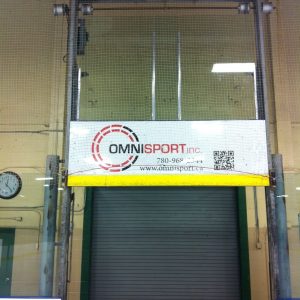- ORFA Home
- The Recreation Facility Profession
- ORFA News and Alerts
- ALERT - Recreation Facility Overhead Service Doors Risk and Safety Reminder
ORFA ALERT
Recreation Facility Overhead Service Doors - Risk and Safety Reminder
July 28, 2025
ANNOUNCEMENT
Recreation facilities have a variety of overhead service doors that are designed to allow unrestricted access to the building for loading purposes. The introduction of dasherboard lift gates is one design option that significantly improves accessibility onto the ice sheet surface.
 The ORFA wishes to remind members to add the inspection, lubrication and adjustment of these lift gates to the facilities asset maintenance and management plans. Overhead doors are heavy, dynamic, and often operate where there is facility user traffic that creates a risk of being “struck by” or a “crushed by” incident. Part III Section 25(1)(b) and Section 25(2)(h) of the Ontario Occupational Health and Safety Act directs owners on the responsibility of compliance in maintaining these systems to keep them operating properly and safely.
The ORFA wishes to remind members to add the inspection, lubrication and adjustment of these lift gates to the facilities asset maintenance and management plans. Overhead doors are heavy, dynamic, and often operate where there is facility user traffic that creates a risk of being “struck by” or a “crushed by” incident. Part III Section 25(1)(b) and Section 25(2)(h) of the Ontario Occupational Health and Safety Act directs owners on the responsibility of compliance in maintaining these systems to keep them operating properly and safely.
Most commercial overhead doors are made with components such as cables, hinges, bearings and rollers that need regular maintenance and/or replacement. Neglecting small problems can cause doors to become prone to failure, and this may make the continued operation dangerous [More]. It is common for commercial overhead doors to be equipped with motorized, electric operators that close the door automatically or semi automatically. Doors operating this way create inherit an increased “struck by” or “crushed by” risk, and should be equipped with appropriate entrapment devices (e.g., photo-eyes or sensing edge) that reverses the door’s direction should it encounter an obstruction while closing. Installing a manual safety mechanism to act as a gate stop is also an acceptable safety measure.
All door systems should be installed, inspected and maintained in accordance with the manufacturers’ specifications. This includes maintenance intervals, which can vary depending on the operating environment. Documentation should be maintained that details the maintenance and service work performed. Problems or deficiencies and corrective action taken needs to be documented. Potential risks associated with these devices should be included in all internal staff onboarding and ongoing safety training (refer to Safety Talks, City of Kitchener). While regular maintenance is not a guarantee against future problems, finding and fixing small problems, like frayed cables or worn rollers, before they become a higher risk of failure is diligent. Facility managers will need to determine what role building staff can play and when a qualified technician should be retained to service the device.
The Recreation Facility Profession |
© Ontario Recreation Facilities Association Inc. Privacy Policy
|
